annotated bibliography of Hardy criticism and comment
Thomas Hardy criticism is a collection of publications on Thomas Hardy and his works, with bibliographic details and a brief description of their contents. The details include active web links to Amazon where you can buy the books, often in a variety of formats – new, used, and as Kindle eBooks. The listings are arranged in alphabetical order of author.
The list includes new books and older publications which may now be considered rare. It also includes print-on-demand or Kindle versions of older texts which are much cheaper than the original. Others (including some new books) are often sold off at rock bottom prices. Whilst compiling these listings I bought a copy of Ian Gregor’s critical study, The Form of Hardy’s Major Fiction for one penny.
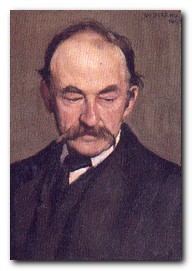
![]() The Poetry of Thomas Hardy: A Handbook and Commentary –
The Poetry of Thomas Hardy: A Handbook and Commentary –
J.O. Bailey, The University of North Carolina Press, 1971. The complete poems, plus critical commentary.
![]() An Essay on Hardy – John Bayley, Cambridge: Cambridge University Press, 1981. A critical assessment of the novels and the poetry, with an emphasis on eroticism and humour.
An Essay on Hardy – John Bayley, Cambridge: Cambridge University Press, 1981. A critical assessment of the novels and the poetry, with an emphasis on eroticism and humour.
![]() Thomas Hardy and Women: Sexual Ideology and Narrative Form – Penny Boumelha, Barnes and Noble, 1982. A critical study of Hardy’s novels showing the relationship between gender and the telling of the tale.
Thomas Hardy and Women: Sexual Ideology and Narrative Form – Penny Boumelha, Barnes and Noble, 1982. A critical study of Hardy’s novels showing the relationship between gender and the telling of the tale.
![]() The Short Stories of Thomas Hardy – Kristin Brady, London: Palgrave Macmillan, 1982. A critical introduction to the complete short stories.
The Short Stories of Thomas Hardy – Kristin Brady, London: Palgrave Macmillan, 1982. A critical introduction to the complete short stories.
![]() Thomas Hardy: The World of his Novels – J.B. Bullen, Frances Lincoln, 2013. A study of Hardy’s Wessex, exploring the buildings, places, and scenes that inspired his fiction.
Thomas Hardy: The World of his Novels – J.B. Bullen, Frances Lincoln, 2013. A study of Hardy’s Wessex, exploring the buildings, places, and scenes that inspired his fiction.
![]() The Language of Thomas Hardy – Raymond Chapman, London: Palgrave Macmillan, 1990. A study of Hardy’s distinctive phraseology and sentence-structure in both the poetry and the fiction.
The Language of Thomas Hardy – Raymond Chapman, London: Palgrave Macmillan, 1990. A study of Hardy’s distinctive phraseology and sentence-structure in both the poetry and the fiction.
![]() Thomas Hardy: The Critical Heritage – R.G.Cox, London: Routledge and Keegan Paul, 1970. A collection of critical essays, showing the historical development of Hardy criticism.
Thomas Hardy: The Critical Heritage – R.G.Cox, London: Routledge and Keegan Paul, 1970. A collection of critical essays, showing the historical development of Hardy criticism.
![]() Ambivalence in Hardy: A Study of his Attitude to Women – Shanta Dutta, Anthem Press, 2010. Hardy’s attitudes to women in his fiction and in his interactions with his wives, literary protégées and contemporary female authors. Combines a feminist approach with close textual analysis.
Ambivalence in Hardy: A Study of his Attitude to Women – Shanta Dutta, Anthem Press, 2010. Hardy’s attitudes to women in his fiction and in his interactions with his wives, literary protégées and contemporary female authors. Combines a feminist approach with close textual analysis.
![]() Sexing Hardy: Thomas Hardy and Feminism – Margaret Elvy, Crescent Moon Publishing, 2007. A study of gender, desire, class, economy, socialization, identity and patriarchy in Hardy’s fiction and poetry.
Sexing Hardy: Thomas Hardy and Feminism – Margaret Elvy, Crescent Moon Publishing, 2007. A study of gender, desire, class, economy, socialization, identity and patriarchy in Hardy’s fiction and poetry.
![]() Hardy the Creator: A Textual Biography – Simon Gattrel, Oxford: Clarendon Press, 1989. The evolution of Hardy’s novels and stories from first draft to final revised texts as he took them through the process of dealings with magazine editors, publishers, and printers.
Hardy the Creator: A Textual Biography – Simon Gattrel, Oxford: Clarendon Press, 1989. The evolution of Hardy’s novels and stories from first draft to final revised texts as he took them through the process of dealings with magazine editors, publishers, and printers.
![]() The Complete Poems of Thomas Hardy – James Gibson (ed), London: Palgrave Macmillan, 2001. A compendium of Hardy’s eight published books of poetry, plus critical notes.
The Complete Poems of Thomas Hardy – James Gibson (ed), London: Palgrave Macmillan, 2001. A compendium of Hardy’s eight published books of poetry, plus critical notes.
![]() The Great Web: The Form of Hardy’s Major Fiction – I. Gregor, London: Faber & Faber, 1982. A critical study of the great later novels.
The Great Web: The Form of Hardy’s Major Fiction – I. Gregor, London: Faber & Faber, 1982. A critical study of the great later novels.
![]() The Life of Thomas Hardy – Florence Emily Hardy, Wordsworth Editions, 2007. This is more or less Hardy’ s autobiography, since he told his wife what to write.
The Life of Thomas Hardy – Florence Emily Hardy, Wordsworth Editions, 2007. This is more or less Hardy’ s autobiography, since he told his wife what to write.
![]() The Complete Critical Guide to Thomas Hardy – Geoffrey Harvey, London: Routledge, 2003. A student’s guide to Hardy – the man and his work in fiction and poetry.
The Complete Critical Guide to Thomas Hardy – Geoffrey Harvey, London: Routledge, 2003. A student’s guide to Hardy – the man and his work in fiction and poetry.
![]() The Sense of Sex: Feminist Perspectives on Hardy – Margaret Higgonet (ed), Urbana: University of Illinois Press, 1993. A collection of essays which offer an overview of feminist critiques of Hardy and his treatment of gender.
The Sense of Sex: Feminist Perspectives on Hardy – Margaret Higgonet (ed), Urbana: University of Illinois Press, 1993. A collection of essays which offer an overview of feminist critiques of Hardy and his treatment of gender.
![]() Authors in Context: Thomas Hardy – Patricia Ingham, Oxford University Press, 2009. Social and political background to Hardy and his times, showing how modern interpretations on film and television create new contexts in which to read the works afresh.
Authors in Context: Thomas Hardy – Patricia Ingham, Oxford University Press, 2009. Social and political background to Hardy and his times, showing how modern interpretations on film and television create new contexts in which to read the works afresh.
![]() Thomas Hardy (Feminist Readings) – Patricia Ingham, Humanities Press International, 1989. Critical studies of sexuality and gender issues in the major novels.
Thomas Hardy (Feminist Readings) – Patricia Ingham, Humanities Press International, 1989. Critical studies of sexuality and gender issues in the major novels.
![]() Reading Hardy’s Landscapes – Michael Irwin, London: Palgrave Macmillan, 2000. A study of the importance of geography and physical topography in the stories, poems, and novels.
Reading Hardy’s Landscapes – Michael Irwin, London: Palgrave Macmillan, 2000. A study of the importance of geography and physical topography in the stories, poems, and novels.
![]() The Feminist Sensibility in the Novels of Thomas Hardy – Margaret Kaur, Sarup & Son, 2005. Hardy’s presentation of women characters. Often dubbed anti-feminist, this study attempts to exonerate Hardy of this view.
The Feminist Sensibility in the Novels of Thomas Hardy – Margaret Kaur, Sarup & Son, 2005. Hardy’s presentation of women characters. Often dubbed anti-feminist, this study attempts to exonerate Hardy of this view.
![]() Thomas Hardy: The Forms of Tragedy – Dale Kramer, London: Macmillan, 1975. A chronological study of the major novels.
Thomas Hardy: The Forms of Tragedy – Dale Kramer, London: Macmillan, 1975. A chronological study of the major novels.
![]() The Cambridge Companion to Thomas Hardy – Dale Kramer, Cambridge University Press, 1999. A collection of critical essays commissioned from specialists on all aspects of Hardy’s work.
The Cambridge Companion to Thomas Hardy – Dale Kramer, Cambridge University Press, 1999. A collection of critical essays commissioned from specialists on all aspects of Hardy’s work.
![]() Thomas Hardy: Distance and Desire – J. Hillis Miller, Cambridge: Harvard University Press, 1970. A critical study of the interrelation of the literary themes of distance and desire woven throughout the novels and poems.
Thomas Hardy: Distance and Desire – J. Hillis Miller, Cambridge: Harvard University Press, 1970. A critical study of the interrelation of the literary themes of distance and desire woven throughout the novels and poems.
![]() Thomas Hardy: His Career as a Novelist – Michael Millgate, London: Palgrave Macmillan, 1994. Critical readings of the novels in the context of Hardy’s intellectual background, his friendships and family relationships, and his evolution as a professional writer.
Thomas Hardy: His Career as a Novelist – Michael Millgate, London: Palgrave Macmillan, 1994. Critical readings of the novels in the context of Hardy’s intellectual background, his friendships and family relationships, and his evolution as a professional writer.
![]() Thomas Hardy: A Biography Revisited – Michael Millgate, Oxford University Press, 2006. This is the fully updated version of the definitive biography.
Thomas Hardy: A Biography Revisited – Michael Millgate, Oxford University Press, 2006. This is the fully updated version of the definitive biography.
![]() Women and Sexuality in the Novels of Thomas Hardy – Rosemarie Morgan, London: Routledge, 1988. Kindle version of an early feminist study of the major fiction.
Women and Sexuality in the Novels of Thomas Hardy – Rosemarie Morgan, London: Routledge, 1988. Kindle version of an early feminist study of the major fiction.
![]() Student Companion to Thomas Hardy – Rosemarie. Morgan, Greenwood Press, 2006. This study explores Hardy’s life, his career, and most important and unconventional works, and why he abandoned novel-writing in favour of his first love – poetry.
Student Companion to Thomas Hardy – Rosemarie. Morgan, Greenwood Press, 2006. This study explores Hardy’s life, his career, and most important and unconventional works, and why he abandoned novel-writing in favour of his first love – poetry.
![]() Seeing Hardy: Film and Television Adaptations of the Fiction of Thomas Hardy – Paul J. Nemeyer, McFarland & Co, 2002. A study of adaptations of the major novels for the cinema, plus television films and mini-series based on Hardy’s work.
Seeing Hardy: Film and Television Adaptations of the Fiction of Thomas Hardy – Paul J. Nemeyer, McFarland & Co, 2002. A study of adaptations of the major novels for the cinema, plus television films and mini-series based on Hardy’s work.
![]() Thomas Hardy’s Personal Writings – Harold Orel (ed), London: Palgrave Macmillan, 1967. A collection of Hardy’s novel prefaces, his literary opinions, and reminiscences.
Thomas Hardy’s Personal Writings – Harold Orel (ed), London: Palgrave Macmillan, 1967. A collection of Hardy’s novel prefaces, his literary opinions, and reminiscences.
![]() The Oxford Reader’s Companion to Hardy – Norman Page, Oxford University Press, 2000. Forty essays by experts on all aspects of Hardy’s work – ranging from alcohol, humour, and pets, to the historical context in which he wrote.
The Oxford Reader’s Companion to Hardy – Norman Page, Oxford University Press, 2000. Forty essays by experts on all aspects of Hardy’s work – ranging from alcohol, humour, and pets, to the historical context in which he wrote.
![]() A Thomas Hardy Companion: A Guide to the Works of Thomas Hardy – F.B. Pinion, London: Palgrave Macmillan, 1968. A general critical commentary on the major works and their social background.
A Thomas Hardy Companion: A Guide to the Works of Thomas Hardy – F.B. Pinion, London: Palgrave Macmillan, 1968. A general critical commentary on the major works and their social background.
![]() A Thomas Hardy Dictionary – F.B. Pinion, New York: New York University Press, 1993. Features architectural terms, the sources of quotations, identification of fictional characters, and the explanation of rare or rustic words.
A Thomas Hardy Dictionary – F.B. Pinion, New York: New York University Press, 1993. Features architectural terms, the sources of quotations, identification of fictional characters, and the explanation of rare or rustic words.
![]() Thomas Hardy: A Bibliographical Study – Richard L. Purdy and Charles P.C. Pettit, The British Library Publishing Division, 2002. An important bibliography first published in 1954, and now supplemented by modern criticism and recent Hardy studies.
Thomas Hardy: A Bibliographical Study – Richard L. Purdy and Charles P.C. Pettit, The British Library Publishing Division, 2002. An important bibliography first published in 1954, and now supplemented by modern criticism and recent Hardy studies.
![]() Hardy’s Use of Allusion – Marlene Springer, London: Macmillan, 1983. A study of Hardy’s widespread use of allusions from classical, biblical, historical, and literary sources.
Hardy’s Use of Allusion – Marlene Springer, London: Macmillan, 1983. A study of Hardy’s widespread use of allusions from classical, biblical, historical, and literary sources.
![]() The Neglected Hardy: Thomas Hardy’s Lesser Novels – Richard H. Taylor, London: Palgrave Macmillan, 1982. A critical examination of the lesser-known novels.
The Neglected Hardy: Thomas Hardy’s Lesser Novels – Richard H. Taylor, London: Palgrave Macmillan, 1982. A critical examination of the lesser-known novels.
![]() The Personal Notebooks of Thomas Hardy – Richard H. Taylor, Columbia University Press, 1979. Includes the unpublished passages from the original typescripts of the ‘Life of Thomas Hardy’.
The Personal Notebooks of Thomas Hardy – Richard H. Taylor, Columbia University Press, 1979. Includes the unpublished passages from the original typescripts of the ‘Life of Thomas Hardy’.
![]() Thomas Hardy: The Time-torn Man – Clair Tomalin, London: Penguin, 2012. A biography of Hardy with emphasis on the death of his first wife and the curious marriage to his second.
Thomas Hardy: The Time-torn Man – Clair Tomalin, London: Penguin, 2012. A biography of Hardy with emphasis on the death of his first wife and the curious marriage to his second.
![]() A Preface to Hardy – Merryn Williams, London: Longman, 1976. A readable and unexpectedly positive study of Hardy’s prose and verse.
A Preface to Hardy – Merryn Williams, London: Longman, 1976. A readable and unexpectedly positive study of Hardy’s prose and verse.
![]() A Companion to Thomas Hardy – Keith Wilson, Wiley-Blackwell, 2012. A collection of essays offering a one–volume resource which encompasses all aspects of Hardy’s major novels, short stories, and poetry.
A Companion to Thomas Hardy – Keith Wilson, Wiley-Blackwell, 2012. A collection of essays offering a one–volume resource which encompasses all aspects of Hardy’s major novels, short stories, and poetry.
![]() Thomas Hardy: Towards a Materialist Criticism – George Wooton, Barnes & Noble Books, 1985. Explores the historical, social, aesthetic and ideological determinants of Hardy’s novels.
Thomas Hardy: Towards a Materialist Criticism – George Wooton, Barnes & Noble Books, 1985. Explores the historical, social, aesthetic and ideological determinants of Hardy’s novels.
© Roy Johnson 2015
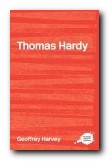 The Complete Critical Guide to Thomas Hardy is a good introduction to Hardy criticism. It includes a potted biography of Hardy, an outline of the stories, novels, and poetry, and pointers towards the main critical writings – from the early influential full length study by D.H. Lawrence to critics of the present day. Also includes a thorough bibliography which covers biography, criticism in books and articles, plus pointers towards specialist Hardy journals. These guides are very popular.
The Complete Critical Guide to Thomas Hardy is a good introduction to Hardy criticism. It includes a potted biography of Hardy, an outline of the stories, novels, and poetry, and pointers towards the main critical writings – from the early influential full length study by D.H. Lawrence to critics of the present day. Also includes a thorough bibliography which covers biography, criticism in books and articles, plus pointers towards specialist Hardy journals. These guides are very popular.
More on Thomas Hardy
More on the novella
More on literary studies
More on short stories
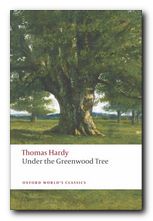 Under the Greenwood Tree
Under the Greenwood Tree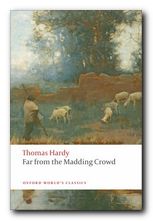 Far from the Madding Crowd
Far from the Madding Crowd The Return of the Native
The Return of the Native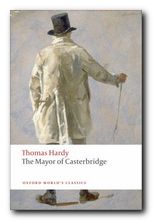 The Mayor of Casterbridge
The Mayor of Casterbridge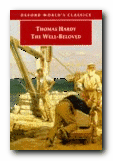
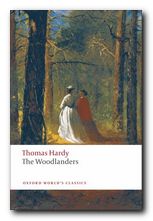 The Woodlanders
The Woodlanders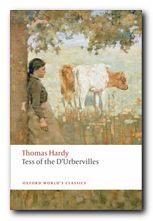 Tess of the d’Urbervilles
Tess of the d’Urbervilles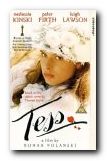 Tess: DVD
Tess: DVD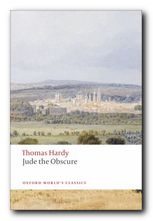 Jude the Obscure
Jude the Obscure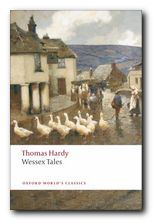 Wessex Tales
Wessex Tales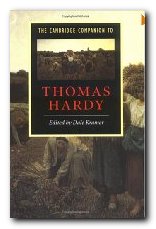 The Cambridge Companion to Thomas Hardy
The Cambridge Companion to Thomas Hardy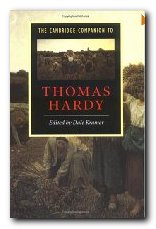
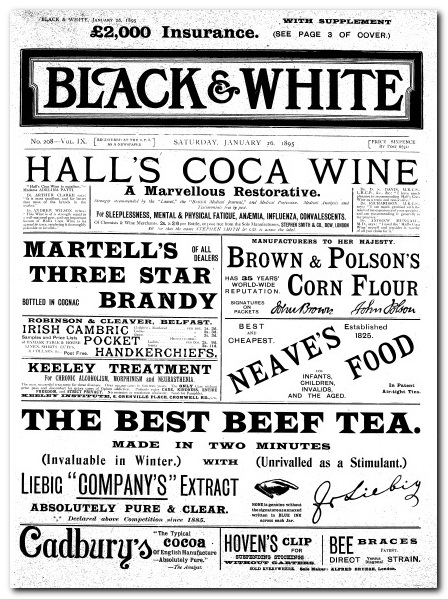
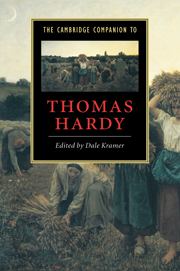
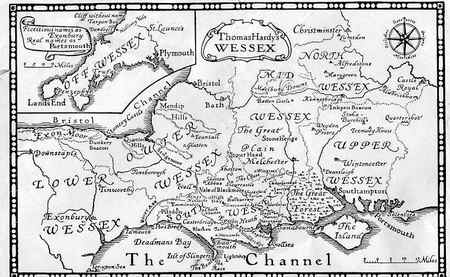

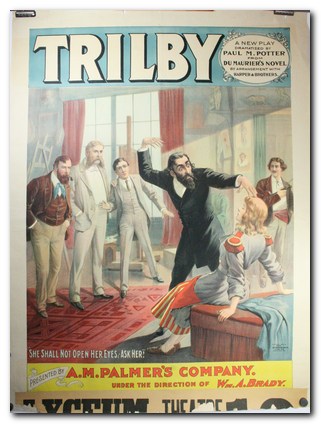
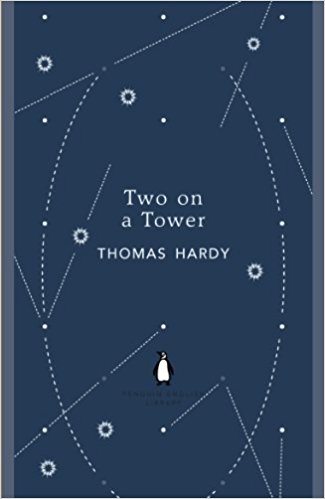
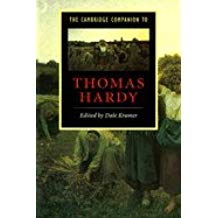
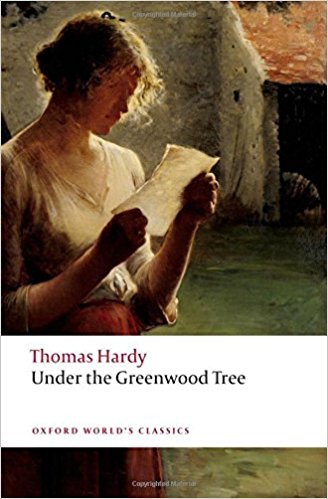
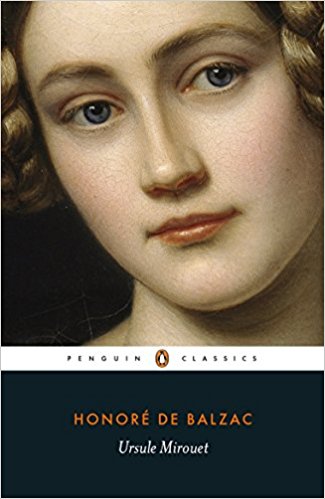
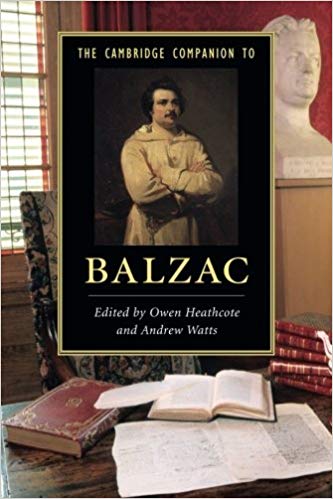



 The Aspern Papers
The Aspern Papers The Spoils of Poynton
The Spoils of Poynton Daisy Miller
Daisy Miller